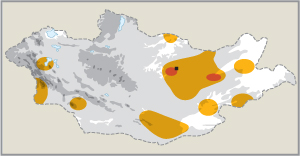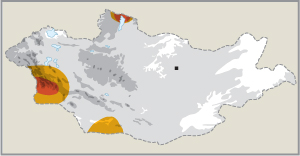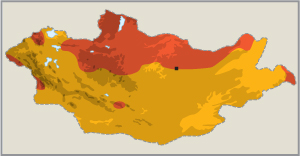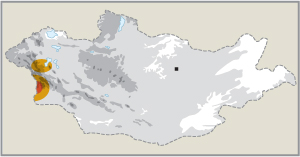
PLATE 51: DOVES
Eurasian Collared Dove Streptopelia decaocto
31–34 cm

ID Uniform pale buff-grey plumage and black neck bar are diagnostic. Voice Male gives a three-note crooning coo coooo coo. Flight call a high emphatic crooooon. Habitat Deciduous forest in mountain and river valleys, stands of trees near agricultural land, and parks and gardens in towns. Behaviour Forages on the ground mainly for plant material; often tame and approachable. Status Rare and very local resident breeder and passage migrant, expanding its range since 1980s.
European Turtle Dove Streptopelia turtur
25–27 cm

ID Distinguished from commoner Oriental Turtle Dove by smaller size and paler underparts coloration and upperwing feathers, which have smaller dark centres and broader rufous fringes. See also Oriental Turtle Dove. Voice Song is a soothing purr, turr, turr. Habitat Nests in deciduous and mixed forest and feeds in brushland and other open areas. Behaviour Often roosts in trees, but feeds mainly on ground. Usually shy. Status Very rare and local breeding visitor in Bulgan and Bondonch River valleys, Khovd province, where it may overwinter. Also recorded at Segs Tsagaan Bogd Mountain in Trans-Altai Gobi and in mountains north of Lake Hövsgöl. Conservation Considered Vulnerable globally. [Alt: Eurasian Turtle Dove]
Oriental Turtle Dove Streptopelia orientalis
30–35 cm

ID Larger and stockier than much rarer Eurasian Collared and European Turtle Doves. Scaly feathers of mantle have larger dark centres and narrower rufous fringes than Eurasian, creating an overall darker appearance. Subspecies S. o. orientalis has grey, not white, tail-tip; subspecies S. o. meena has white tail-tip like European Turtle Dove. Juv similar but duller. Voice Song is a repeated crooning doo-doo doo-doo hoo-hoo. Habitat Nests in deciduous and mixed forest in mountains and river valleys, but occurs in parks, gardens and oases in desert steppe and Gobi on migration. Behaviour Spends more time on ground than European Turtle Dove. Status Fairly common breeding visitor in northern third of country and fairly common passage migrant throughout, late April to late August (early September in the Gobi). S. o. meena occurs in the Great Lakes Depression and Mongol–Altai mountain range in the west, and S. o. orientalis in the rest of the country. [Alt: Rufous Turtle Dove]
Laughing Dove Spilopelia senegalensis
23–26 cm

ID Smaller, more slender and longer-tailed than Streptopelia doves in Mongolia. It is also distinguished by unscaled reddish-brown upperparts, reddish and black speckled ‘necklace’ and absence of black on undertail. Voice Low chuckling ooo-took-took-ooo-croo. Habitat Deciduous and mixed riparian forest. Behaviour Forages mainly on ground. Often tame and approachable. Status Very rare and local breeding visitor and presumed winter resident in isolated localities in Bulgan River Valley, Khovd province, and rare passage migrant, late April to early September. Taxonomy Formerly placed in genus Streptopelia.